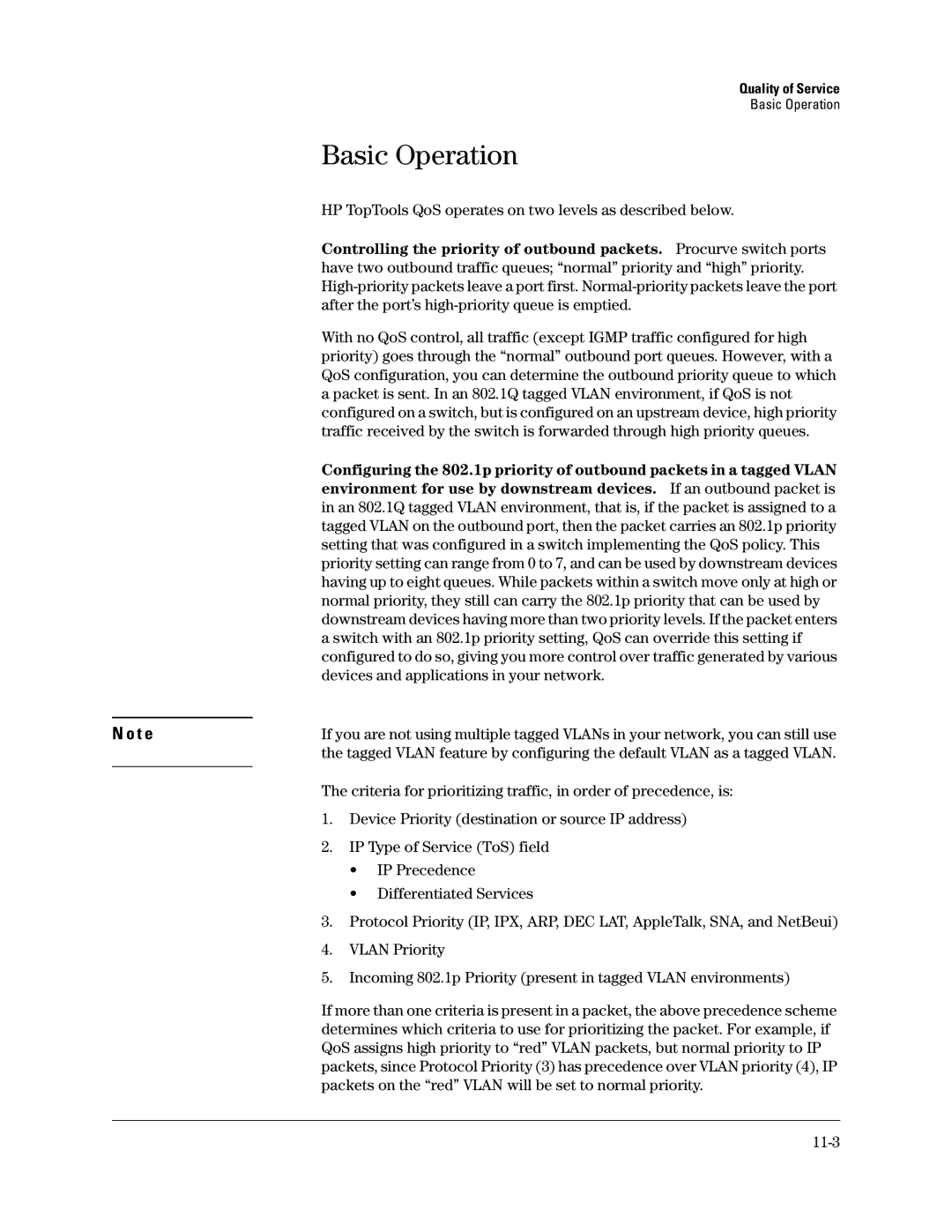
Quality of Service
Basic Operation
Basic Operation
HP TopTools QoS operates on two levels as described below.
Controlling the priority of outbound packets. Procurve switch ports have two outbound traffic queues; “normal” priority and “high” priority.
With no QoS control, all traffic (except IGMP traffic configured for high priority) goes through the “normal” outbound port queues. However, with a QoS configuration, you can determine the outbound priority queue to which a packet is sent. In an 802.1Q tagged VLAN environment, if QoS is not configured on a switch, but is configured on an upstream device, high priority traffic received by the switch is forwarded through high priority queues.
Configuring the 802.1p priority of outbound packets in a tagged VLAN
environment for use by downstream devices. If an outbound packet is in an 802.1Q tagged VLAN environment, that is, if the packet is assigned to a tagged VLAN on the outbound port, then the packet carries an 802.1p priority setting that was configured in a switch implementing the QoS policy. This priority setting can range from 0 to 7, and can be used by downstream devices having up to eight queues. While packets within a switch move only at high or normal priority, they still can carry the 802.1p priority that can be used by downstream devices having more than two priority levels. If the packet enters a switch with an 802.1p priority setting, QoS can override this setting if configured to do so, giving you more control over traffic generated by various devices and applications in your network.
N o t e | If you are not using multiple tagged VLANs in your network, you can still use |
| the tagged VLAN feature by configuring the default VLAN as a tagged VLAN. |
|
|
The criteria for prioritizing traffic, in order of precedence, is:
1.Device Priority (destination or source IP address)
2.IP Type of Service (ToS) field
•IP Precedence
•Differentiated Services
3.Protocol Priority (IP, IPX, ARP, DEC LAT, AppleTalk, SNA, and NetBeui)
4.VLAN Priority
5.Incoming 802.1p Priority (present in tagged VLAN environments)
If more than one criteria is present in a packet, the above precedence scheme determines which criteria to use for prioritizing the packet. For example, if QoS assigns high priority to “red” VLAN packets, but normal priority to IP packets, since Protocol Priority (3) has precedence over VLAN priority (4), IP packets on the “red” VLAN will be set to normal priority.
